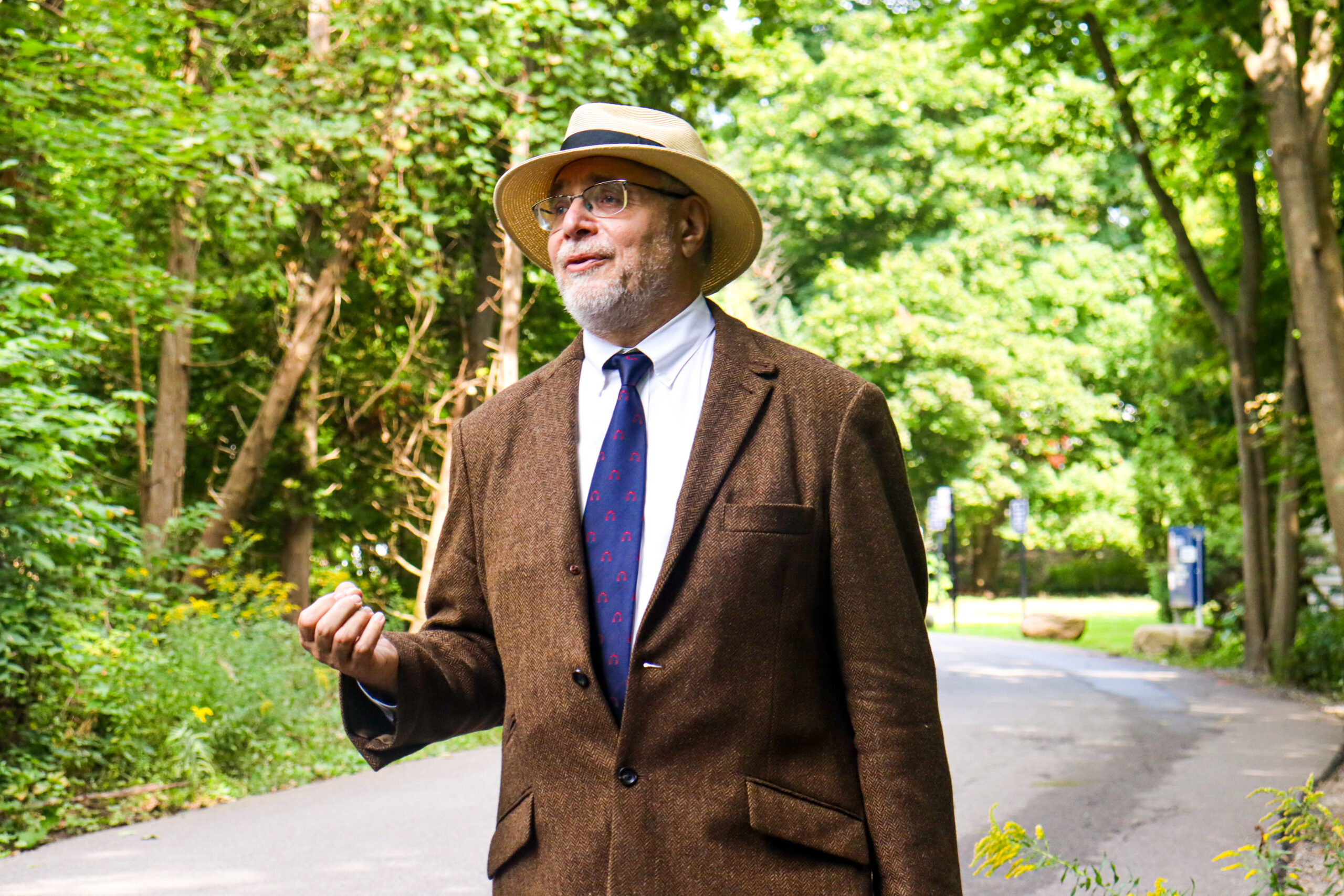The unspoken bond between religion and ecological thought and action
A new anthropology course at UTM spearheaded by Professor Stephen Scharper explores how religion and the environment are inextricably linked.
Many religious practices and cultures have long highlighted a deep relationship with the environment. One course at the University of Toronto Mississauga’s (UTM) Department of Anthropology, World Religions and Ecology (ANT368) introduces students to ideas of how religious topics are linked to environmental realities. The Medium spoke with Professor Stephen Scharper, the developer and current instructor of the course, to get more insight into what the course offers.
Professor Scharper explained that the idea for the course came to him during his time pursuing his PhD at McGill University, where he took a class that followed the intersection of religion and ecology. From there, Professor Scharper inherited a course titled “Religious Ethics and the Environment” from a fellow PhD student and worked on adjusting it over the years.
When it comes to how religion relates to something physical like the environment, Professor Scharper explained that “religions have consequential ideas,” and said, “the environmental crisis is of such a profound nature that it forces us to rethink our fundamental philosophical, religious and ethical presets.”
Professor Scharper elaborated that 85 per cent of the world’s population follows religion and argues that if religion and environmentalism aren’t seen as interconnected or complementary, then as a society, “we’re not going to [be thinking deeply] about the social change at the values level and the spiritual level that we need to have.”
When we’re thinking about the environment, it’s important to consider the related religious, spiritual, political, social, cultural, and philosophical ideas according to Professor Scharper.
“Religious ideas, in some cases, have powerful consequences [on] social and cultural change,” Professor Scharper said. They can influence how individuals, communities, and intuitions handle contemporary environmental crises. For instance, common global issues such as deforestation can be handled in unique ways with religious ideas.
Professor Scharper refers to the example of Redwood rabbis in California who united as a group of concerned Jewish rabbis to advocate for the preservation of these trees by petitioning the state government and paper companies.
Even in Thailand, some are sharing concerns over the preservation of trees. According to Professor Scharper, the Green Buddhist Monks organized to protect the trees of Thailand by wrapping saffron sashes around them. “In that Buddhist tradition that is [a] sign of the sacred, so it deterred loggers from cutting them down,” Scharper explained. Their actions led to open negotiations with the government to preserve parts of these trees in the watershed.
Professor Scharper also emphasizes practical learning beyond the classroom by inviting guest speakers, using readings from different Indigenous authors, and incorporating practical exercises. For example, Professor Scharper invited Lenore Keeshig, a traditional storyteller, poet, and naturalist of Ojibwe origin who worked with Parks Canada from the Bruce Peninsula National Park. She will be sharing her poetry with the course via Zoom and discussing her relationship with the land inscribed in language.
University of Toronto Professor John Johnson will also be taking ANT368 students for an Indigenous walk where students will learn about the historical lands they tread and about Indigenous practices that relate to the food and land. Professor Scharper emphasized how Professor Johnston, who also works within Toronto’s Indigenous community as a lead organizer for First Story Toronto, shared a unique and personal connection to the history of Indigenous people at UTM.
“When we did it in the past, we were kind of grazing through the UTM campus because this food is used for [stomach problems] while this particular nut is used for easing stress [and so on],” Professor Scharper reminisced on an experience through UTM on how food is used in Indigenous practices. “This [food] was used for winter to keep the hunters and trappers sustained with protein, we’re kind of eating as we’re walking.”
Professor Johnson will guide students in exploring these land experiences and help them actively engage with the environment through religious traditions and practices.
Professor Scharper said he’s even taken students on walks outside class regularly to experience the nature trails while integrating classroom material with physical aspects like the trees and birds.
Professor Scharper noted that environmental awareness is growing within our collective consciousness. “Just as some political leaders are becoming aware that they have to at least pay lip service to environmental concerns in order to get elected, religious leaders are also realizing that their respective faiths must somehow speak to our present ecological crisis if they are to remain vital, and if they are to assist in the planet’s survival.”
Through this course, Professor Scharper hopes to raise awareness of how religious traditions that date back can serve as important ways to increase our environmental consciousness.

